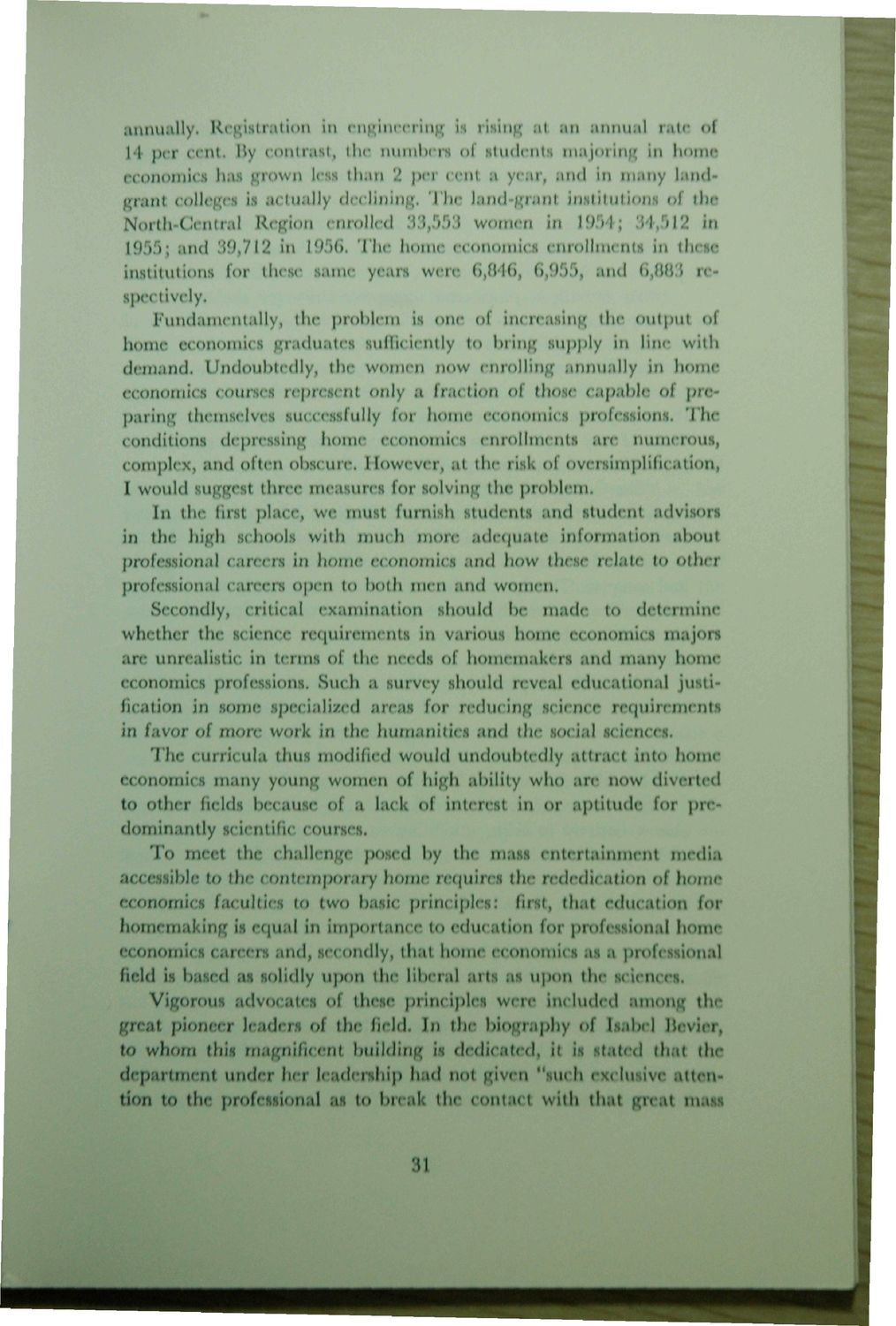| |
| |
Caption: Dedication - Home Economics - Challenge of Home Economics
This is a reduced-resolution page image for fast online browsing.

EXTRACTED TEXT FROM PAGE:
annually. Registration in engineering is riling at an annual rate of 14 per cent. By contrast, the numbers of students majoring in home economics has grown less than 2 per cent a year, and in many landgrant colleges is actually declining. The land-grant institutions of the North-Central Region enrolled 33,553 women in 1954; 34,512 in 1955; and 39,712 in 1956. The home economics enrollments in these institutions for these same years were 6,846, 6,955, and 6,883 respectively. Fundamentally, the problem is one of increasing the output of home economics graduates sufficiently to bring supply in line with demand. Undoubtedly, the women now enrolling annually in home economics courses represent only a fraction of those capable of preparing themselves successfully for home economics professions. The conditions depressing home economies enrollments are numerous, complex, and often obscure. However, at the risk of oversimplification, I would suggest three measures for solving the problem. In the first place, we must furnish students and student advisors in the high schools with much more adequate information about professional careers in home economics and how these relate to other professional careers open to both men and women, Secondly, critical examination should be made to determine whether the science requirements in various home economies majors are unrealistic in terms of the needs of homemakers and many home economics professions. Such a survey should reveal educational justification in some specialized areas for reducing science requirements in favor of more work in the humanities and the social sciences. The curricula thus modified would undoubtedly attract into home economics many young women of high ability who are now diverted to other fields because of a lack of interest in or aptitude for predominantly scientific courses. To meet the challenge posed by the mass entertainment media accessible to the contemporary home requires the rededication of home economics faculties to two basic principles: first, that education for homemaking is equal in importance to education for professional home economics careers and, secondly, that home economics as a professional held is based as solidly upon the liberal arts as upon the sciences. Vigorous advocates of these principles were included among the great pioneer leaders of the field. In the biography of Isabel Bcvier, to whom this magnificent building is dedicated, it is stated that the department under her leadership had not given "such exclusive attention to the professional as to break the contact with that great mass 31
| |